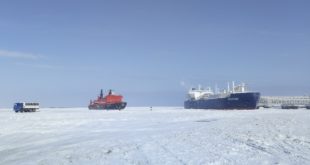Introduction As humanity sets its sights on exploring and eventually colonizing other celestial bodies, the importance of a reliable and robust communication infrastructure in space cannot be overstated. Enter space internet, a cutting-edge technology that is set to play a pivotal role in enabling interplanetary space exploration and colonization. In …
Read More »TimeLine Layout
March, 2024
-
4 March
The Vital Role of Military Logistics in Modern Warfare: Challenges and Innovations
Introduction: In the ever-evolving landscape of modern warfare, military success depends on a combination of strategy, technology, and the efficient management of resources. One often overlooked yet crucial aspect of military operations is logistics that , binds together the complex web of operations. A famous adage, attributed to US Marine General …
Read More » -
3 March
Space Solar Power: Paving the Way for Planetary Exploration and Asteroid Missions
As we delve into the realm of space exploration, our thirst for understanding the cosmos grows stronger. Among the countless questions and challenges we face, one concept has emerged as a potential game-changer—Space Solar Power (SSP). While we’ve explored the potential of SSP for lunar and asteroid mining, it’s crucial …
Read More » -
3 March
Medical Device Cyber Security: A Growing Concern for Healthcare Providers
The healthcare industry has transformed rapidly in the last decade. Today, technology is an integral part of every healthcare aspect – be it drug discovery, research & development, digital promotions, and supply chain management. As healthcare becomes increasingly more digital through electronic health records (HER) adoption and telemedicine applications, the …
Read More » -
2 March
China’s Expanding Arctic Footprint: Geopolitical Implications and Ambitions
Introduction The Arctic, a region of vast ice-covered landscapes and frigid waters, has long been associated with polar exploration and minimal human presence. The Arctic, once a remote and untouched wilderness, is now a focal point of global geopolitics, driven by the dramatic impact of climate change. The melting ice …
Read More » -
2 March
Lunar IoT: Revolutionizing Surface Operations on the Moon
Introduction: The Moon, Earth’s celestial companion, has always fascinated humanity with its mystique and potential for exploration. The Moon is a harsh and unforgiving environment, but it is also a place of great potential. With the development of new technologies, we are now closer than ever to realizing the dream …
Read More » -
1 March
Lunar UAVs and Copters: Unmanned Aerial Vehicles for Lunar Missions
Introduction The Moon, Earth’s closest celestial neighbor, has long fascinated humanity. In recent years, our exploration of this enigmatic world has taken significant strides, with missions aiming to unlock its mysteries and prepare for future human exploration. Among the innovative technologies aiding lunar exploration are Unmanned Aerial Vehicles (UAVs) and …
Read More » -
1 March
DARPA developing AI tools to enhance adult learning in security technologies
The way people work is shifting; acquiring new skill sets can help ensure the national security workforce keeps up with the evolving demands of modern-day society. The World Economic Forum predicts that by 2025, 50% of all workers worldwide will need reskilling in order to compete in the market. The …
Read More »
February, 2024
-
29 February
Navigating the Cosmos: The Role of Interplanetary Vehicles (OTVs)
Introduction As humanity’s thirst for knowledge about the cosmos continues to grow, so does our ambition to explore the mysteries of our solar system and beyond. Interplanetary Vehicles (OTVs), also known as orbital transfer vehicles, have emerged as the workhorses of modern space exploration, enabling us to traverse the vast …
Read More » -
29 February
Revolutionizing Communication: Speech Brain-Computer Interface and Artificial Intelligence Turning Brainwave Patterns into Speech
Introduction Communication is a fundamental aspect of human interaction, enabling us to share thoughts, emotions, and ideas. Unfortunately, some individuals are unable to express themselves through traditional means due to conditions like paralysis or locked-in syndrome. For individuals with conditions like spinal cord injuries, locked-in syndrome, or ALS, the loss …
Read More »
 International Defense Security & Technology Your trusted Source for News, Research and Analysis
International Defense Security & Technology Your trusted Source for News, Research and Analysis


